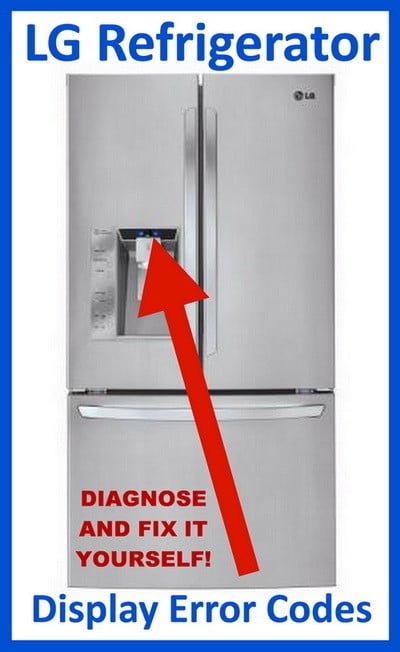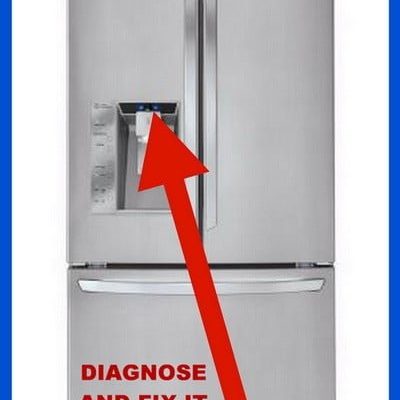
Error Code E3 often points to an issue with the defrost system in your LG fridge. It’s like when you forget to change the oil in your car—things can get messy. The defrost system’s job is to prevent ice build-up, ensuring everything in your fridge stays at the right temperature. If this system hiccups, you might find your fridge working overtime or not cooling as efficiently. The key to avoiding this inconvenience is to understand what causes the error and how to keep your fridge running smoothly. Let’s break it down in a simple way, one step at a time.
Understanding the Real Cause of Error Code E3
Before diving into prevention, let’s clarify what Error Code E3 truly indicates. This error code generally signals a problem with the refrigerator’s defrost cycle, which is crucial for maintaining optimal performance. Think of the defrost cycle as your fridge’s routine cleanup process—it melts away any frost build-up that could interfere with its cooling capabilities. When this process gets interrupted, your fridge essentially has a “bad day at the office.”
The defrosting mechanism mainly involves the defrost heater, defrost timer, and the defrost thermostat. Trouble with any of these components can trigger the E3 error. Imagine the defrost heater as the warm sun dissolving frost on a winter morning. If it’s not working, the frost stays put, causing cooling issues. Similarly, if the defrost timer, which schedules these defrosting cycles, or the thermostat, which senses when defrosting is needed, aren’t functioning properly, they could both contribute to this error.
In most cases, a faulty defrost system results from electrical issues, such as damaged wiring or malfunctioning components, but environmental factors like a door left ajar can exacerbate the problem. Knowing these causes arms you with the information you need to prevent E3 errors in the future. By keeping everything in working order and occasionally checking these elements, you can often sidestep the inconvenience of a malfunctioning fridge.
Effective Steps to Prevent Error Code E3
Now that you know what causes Error Code E3, let’s talk prevention. The first thing to remember is that consistency is key. Regular maintenance goes a long way in preventing defrosting issues. Think of it like taking your plant for some sun every day—little acts of care go a long way. Start by checking the door seals: these nifty rubber linings are crucial in keeping your fridge’s environment stable. If they’re not sealing properly, cool air escapes, and warm air enters, complicating the defrosting process.
Next, consider scheduling regular maintenance checks. Just as you wouldn’t skip your car’s servicing, don’t overlook your fridge. Regular checkups help identify potential problems before they escalate. During these checks, you or a professional can inspect the defrost components, ensuring there is no damage or wear that could lead to failure. Moreover, cleaning the condenser coils can prevent unnecessary strain on your fridge, thereby averting potential defrost issues.
Lastly, be mindful of how you organize your fridge. It might not seem like a big deal, but overstuffing can block air circulation, leading to ice build-up. Think of your fridge as a concert where everyone needs space to breathe. Leave room between items, especially near the vents, to allow proper airflow and ease the workload on your defrost system. Following these steps, you not only prevent the E3 error but also extend the lifespan of your fridge.
When to Seek Professional Help
Okay, sometimes things get a bit more complicated than a DIY fix. If you’ve tried the above steps and Error Code E3 still makes an appearance, it’s time to call in the cavalry—a professional technician. It’s akin to seeing a mechanic when your car doesn’t fire up despite your best efforts. There’s no shame in getting expert help, especially when dealing with electrical components that require technical expertise.
Technicians can perform more in-depth diagnostics to uncover hidden issues that you might not spot. They can check the electrical wiring, components, and overall functionality of the fridge’s defrost system. Remember, working with electrical appliances can be dangerous, so it’s best to let professionals handle complex situations. Additionally, attempting repairs without the necessary skills or tools could inadvertently void warranties or lead to bigger problems down the line.
While waiting for professional help, it’s useful to document any specific observations or patterns when the E3 error appears. This can guide the technician in diagnosing the issue more quickly and accurately. And don’t worry—once everything is resolved, you’ll be better equipped to prevent similar issues in the future, ensuring that cold drink is always within reach when you need it.
Keep Your LG Refrigerator Running Smoothly
To sum up, Error Code E3 is not something to panic about but rather a gentle nudge from your LG refrigerator to check its systems. By understanding the defrost cycle and its components, you’ll be better prepared to maintain your fridge’s efficiency. Regular checks, some organizational mindfulness, and knowing when to call a technician will keep this error from becoming a regular guest in your kitchen.
Treat this maintenance like you would any routine household task, such as watering your plants or dusting the shelves. With care and attention, your LG refrigerator will continue to serve as a reliable kitchen companion. Remember, every appliance has its quirks, but with a little patience and know-how, you can keep those error codes at bay. Here’s to your fridge and the many cool delights it brings into your home!
